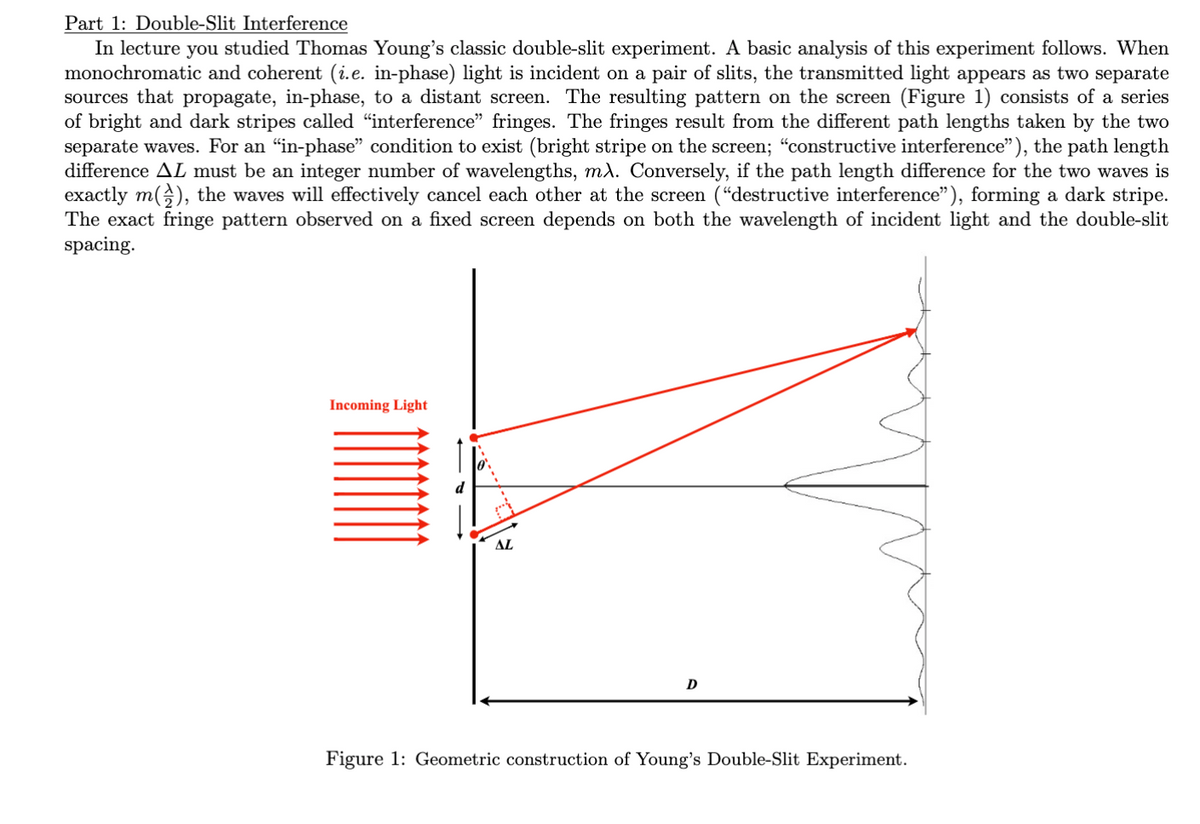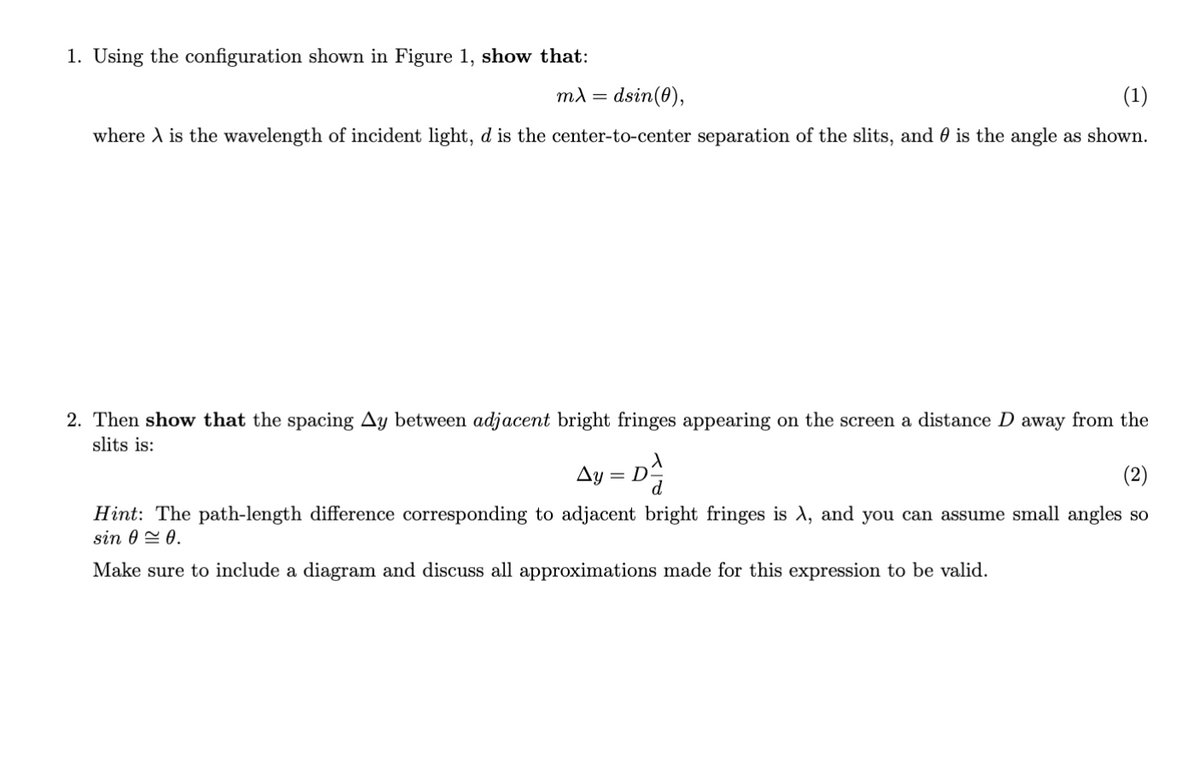1. Using the configuration shown in Figure 1, show that: mλ = dsin(0), (1) where A is the wavelength of incident light, d is the center-to-center separation of the slits, and is the angle as shown. 2. Then show that the spacing Ay between adjacent bright fringes appearing on the screen a distance D away from the slits is: Ay = Dª (2) Hint: The path-length difference corresponding to adjacent bright fringes is X, and you can assume small angles so sin 00. Make sure to include a diagram and discuss all approximations made for this expression to be valid.
1. Using the configuration shown in Figure 1, show that: mλ = dsin(0), (1) where A is the wavelength of incident light, d is the center-to-center separation of the slits, and is the angle as shown. 2. Then show that the spacing Ay between adjacent bright fringes appearing on the screen a distance D away from the slits is: Ay = Dª (2) Hint: The path-length difference corresponding to adjacent bright fringes is X, and you can assume small angles so sin 00. Make sure to include a diagram and discuss all approximations made for this expression to be valid.
Related questions
Question
answer both part 1 and 2

Transcribed Image Text:Part 1: Double-Slit Interference
In lecture you studied Thomas Young's classic double-slit experiment. A basic analysis of this experiment follows. When
monochromatic and coherent (i.e. in-phase) light is incident on a pair of slits, the transmitted light appears as two separate
sources that propagate, in-phase, to a distant screen. The resulting pattern on the screen (Figure 1) consists of a series
of bright and dark stripes called “interference” fringes. The fringes result from the different path lengths taken by the two
separate waves. For an "in-phase" condition to exist (bright stripe on the screen; "constructive interference"), the path length
difference AL must be an integer number of wavelengths, mλ. Conversely, if the path length difference for the two waves is
exactly m(), the waves will effectively cancel each other at the screen ("destructive interference"), forming a dark stripe.
The exact fringe pattern observed on a fixed screen depends on both the wavelength of incident light and the double-slit
spacing.
Incoming Light
AL
D
Figure 1: Geometric construction of Young's Double-Slit Experiment.

Transcribed Image Text:1. Using the configuration shown in Figure 1, show that:
mλ = dsin(0),
(1)
where X is the wavelength of incident light, d is the center-to-center separation of the slits, and is the angle as shown.
2. Then show that the spacing Ay between adjacent bright fringes appearing on the screen a distance D away from the
slits is:
Ay = D.
D=1
(2)
Hint: The path-length difference corresponding to adjacent bright fringes is λ, and you can assume small angles so
sin 0≈ 0.
Make sure to include a diagram and discuss all approximations made for this expression to be valid.
Expert Solution
This question has been solved!
Explore an expertly crafted, step-by-step solution for a thorough understanding of key concepts.
This is a popular solution!
Trending now
This is a popular solution!
Step by step
Solved in 3 steps with 2 images
